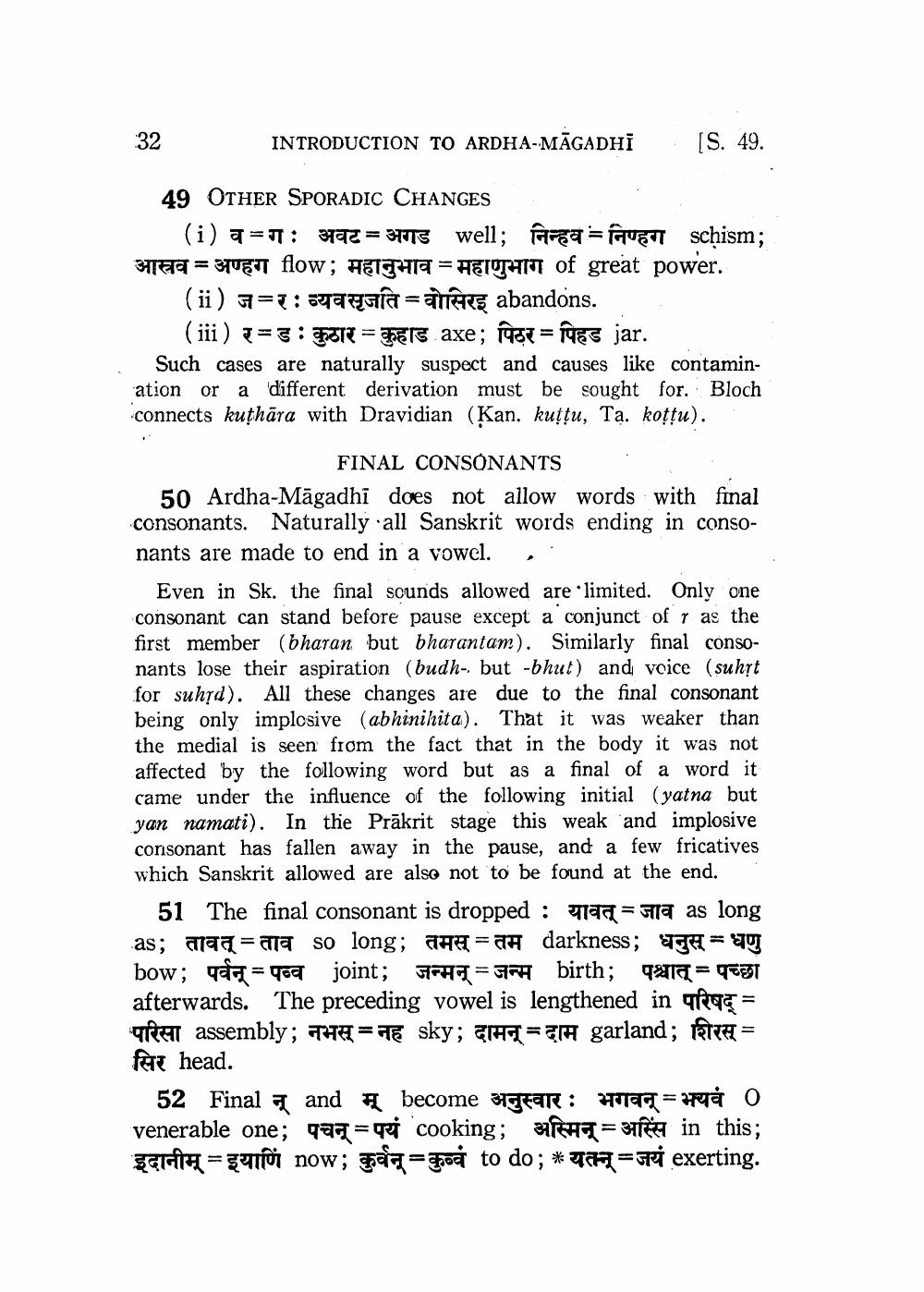________________
32
INTRODUCTION TO ARDHA-MĀGADHI
(S. 49.
49 OTHER SPORADIC CHANGES
(i) a =57: 92 = 315 well; han = FUE schism; 3T€€ = 3TUET flow; HEIGHT = HETTATT of great power.
(ii) 5=7: Gara ranks abandons.
(iii) 2=3: FST2 = ters axe; for free jar. Such cases are naturally suspect and causes like contamination or a different derivation must be sought for. Bloch connects kuthāra with Dravidian (Kan. kuttu, Ta. kottu).
FINAL CONSONANTS 50 Ardha-Māgadhī does not allow words with final consonants. Naturally all Sanskrit words ending in consonants are made to end in a vowel.
Even in Sk. the final sounds allowed are limited. Only one consonant can stand before pause except a conjunct of 7 as the first member (bharan but bharantam). Similarly final consonants lose their aspiration (budh- but -bhut) and voice (suhrt for suhd). All these changes are due to the final consonant being only implosive (abhinihita). That it was weaker than the medial is seen from the fact that in the body it was not affected by the following word but as a final of a word it came under the influence of the following initial (yatna but yan namati). In the Prākrit stage this weak and implosive consonant has fallen away in the pause, and a few fricatives which Sanskrit allowed are also not to be found at the end.
51 The final consonant is dropped : यावत् = जाव as long as; araa= ata so long; ahe = CH darkness; age=gu bow; a = 90al joint; THE = 37RH birth; 217= 96891 afterwards. The preceding vowel is lengthened in hac = open assembly; FHE = TE sky; CH=garland; Ba= सिर head.
52 Final 7 and Æ become 3gfar : HTag = 0 venerable one; पचन् = पयं cooking; अस्मिन् = अस्सि in this; craft = getur now; gaia=go to do; * 729=Fri exerting.




